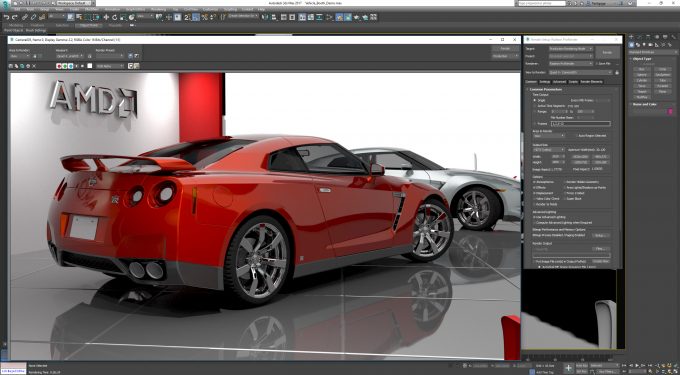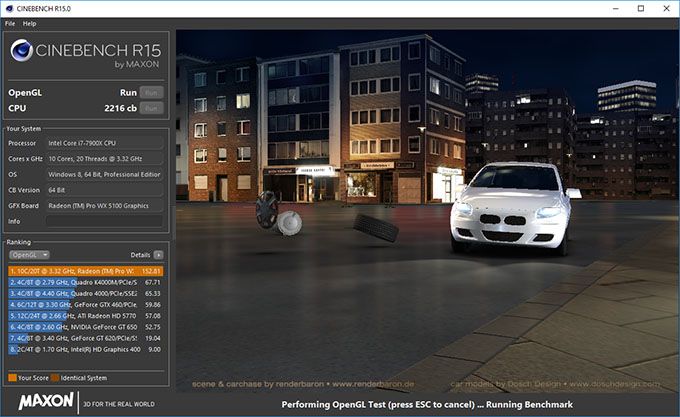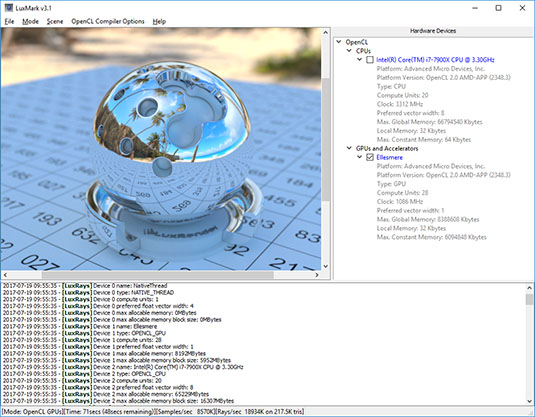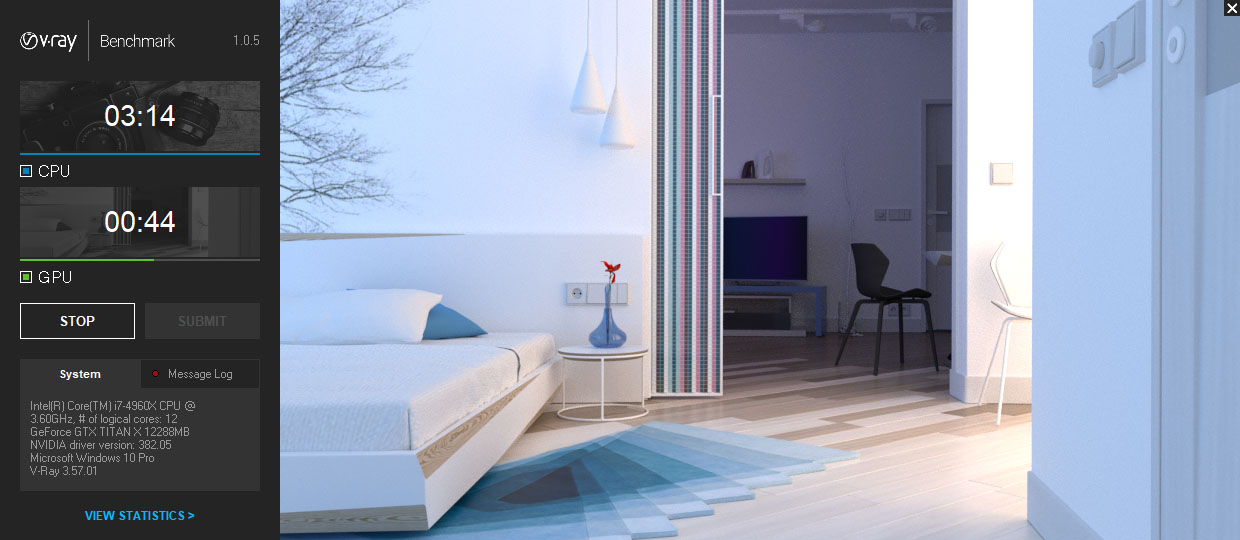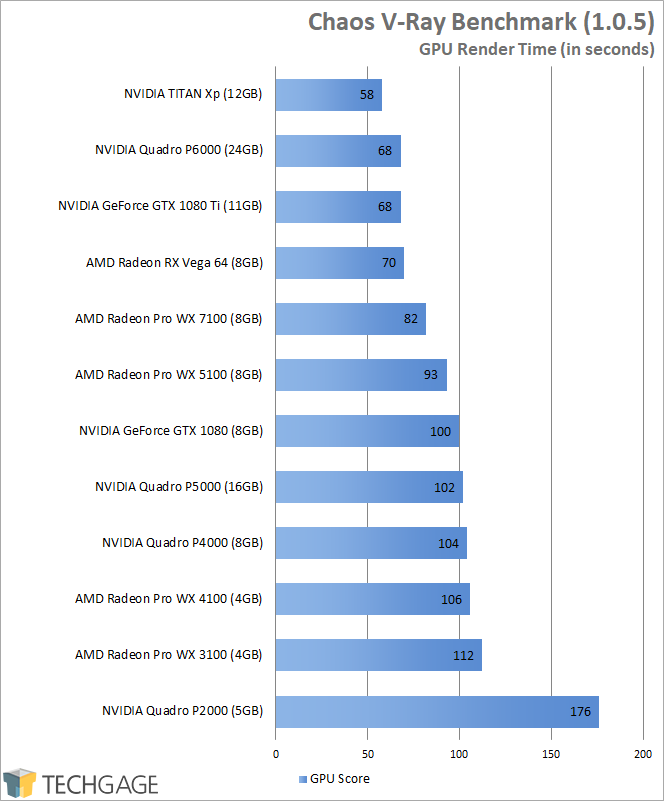- Qualcomm Launches Snapdragon 4 Gen 2 Mobile Platform
- AMD Launches Ryzen PRO 7000 Series Mobile & Desktop Platform
- Intel Launches Sleek Single-Slot Arc Pro A60 Workstation Graphics Card
- NVIDIA Announces Latest Ada Lovelace Additions: GeForce RTX 4060 Ti & RTX 4060
- Maxon Redshift With AMD Radeon GPU Rendering Support Now Available
A Look At AMD’s Radeon RX Vega 64 Workstation & Compute Performance

After months and months of anticipation, AMD’s RX Vega series has arrived. The first model out-of-the-gate is the RX Vega 64, going up against the GTX 1080 in gaming. In lieu of a look at gaming to start our Vega coverage, we decided to go the workstation route – and we’re glad we did. Prepare yourself to be decently surprised.
Page 2 – Rendering: Autodesk 3ds Max, Cinebench, LuxMark & V-Ray Benchmark
Autodesk 3ds Max 2017
The best use case for GPUs in rendering is using them for realistic lighting, something achieved through AMD’s ProRender and NVIDIA’s Iray ray tracing renderers. ProRender can make use of NVIDIA’s hardware (with a warning about a lack of optimization), but the reverse isn’t true. Since it’s fair game as an OpenCL renderer, I test both AMD and NVIDIA cards with ProRender.
This testing makes use of Autodesk 3ds Max 2017, which is the most recent version ProRender supports (the same applies to Iray). Both scenes used for testing render with 500 iterations, giving us a nice looking result, but not a production one (that’d require at least 2,500). The scenes include an AMD autoshow, and a cool dragon; both of which can be snagged for free from the ProRender GitHub page.
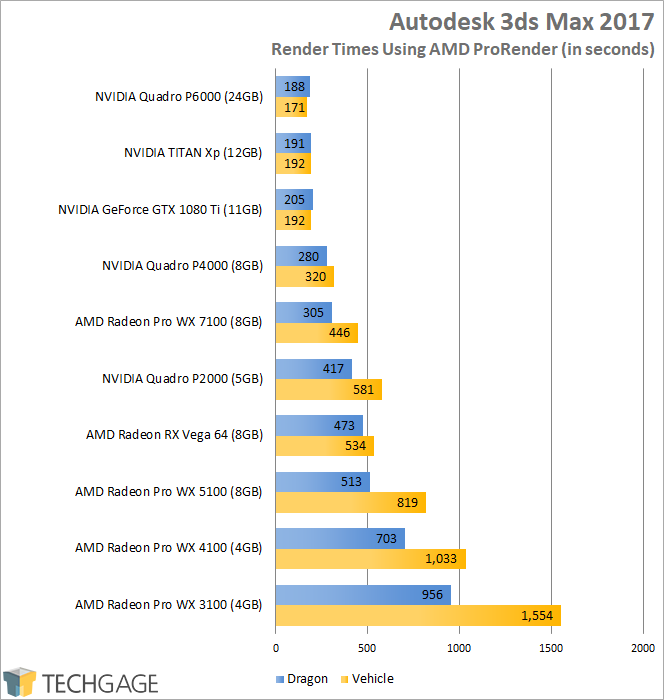
The lack of professional optimization rears its ugly head here. Technically, the Vega 64 should stomp the WX 7100, but for what I assume are in fact a lack of optimizations, it doesn’t happen. The real winner of this entire lineup is, oddly enough, the lowbie Quadro P2000. It delivers middle-of-the-road performance for a mere $420 USD. The WX 7100 makes notable gains beyond that, earning its $620 USD price tag.
Synthetic: Cinebench R15, LuxMark 3.1 & V-Ray
To compare our collection of workstation graphics cards across other renderers, Cinebench R15(.038), LuxMark 3.1, and V-Ray Benchmark are used. Cinebench is a good gauge of OpenGL performance in Cinema4D, whereas LuxMark tests the cards’ prowess for OpenCL. LuxMark is also used for gauging peak power draw (found on the final page), and while it doesn’t push the GPU as hard as a gaming benchmark does, it offers a realistic look at rendering performance-per-watt. Chaos’ V-Ray Benchmark is a brand-new entrant, acting like the others to give us a performance gauge based on its namesake rendering engine.
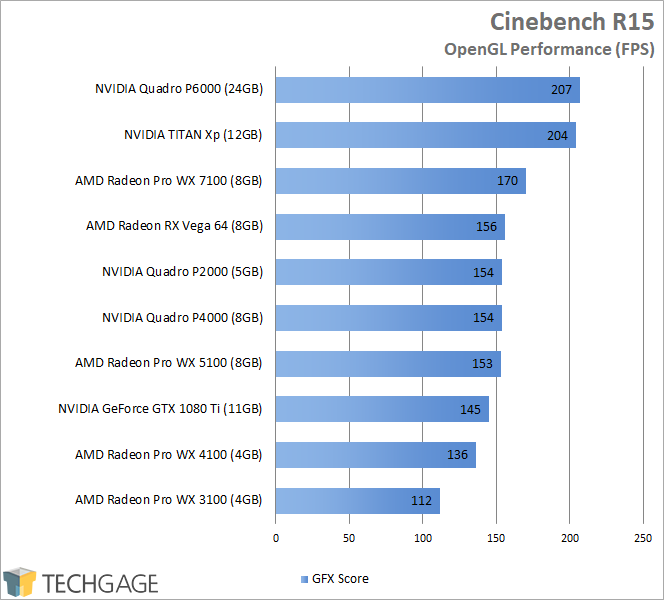
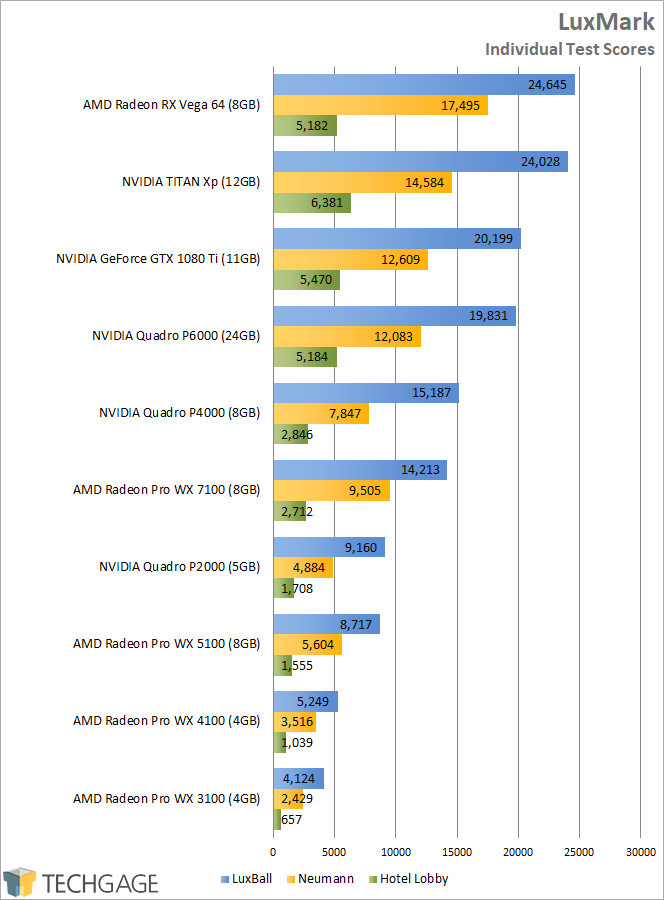
Well, well, well. Would you look at this? AMD’s Radeon RX Vega 64 falls just behind the Radeon Pro WX 7100 in Cinebench, but it soars past the same GPU in both LuxMark and V-Ray. In fact, I should stress that your eyes don’t deceive you: Vega 64 really does beat the entire lineup in LuxMark. That includes beating out the $5,000 Quadro P6000.
What’s really interesting about this result is the fact that this kind of domination couldn’t be seen in ray tracing via AMD’s ProRender 3ds Max test, proving that if you don’t see a performance boost with one renderer, you may with another.
LuxMark is admittedly a bit of a niche test, but V-Ray sure isn’t. Here, the Vega 64 only fell behind the Quadro P6000 and TITAN Xp. Gaming on Vega might be rough around the edges, but clearly, some compute tests fare much better.
October 5, 2017 Addendum: Our V-Ray results have been proven incorrect here, and have been retested. Please refer to here.
Support our efforts! With ad revenue at an all-time low for written websites, we're relying more than ever on reader support to help us continue putting so much effort into this type of content. You can support us by becoming a Patron, or by using our Amazon shopping affiliate links listed through our articles. Thanks for your support!




